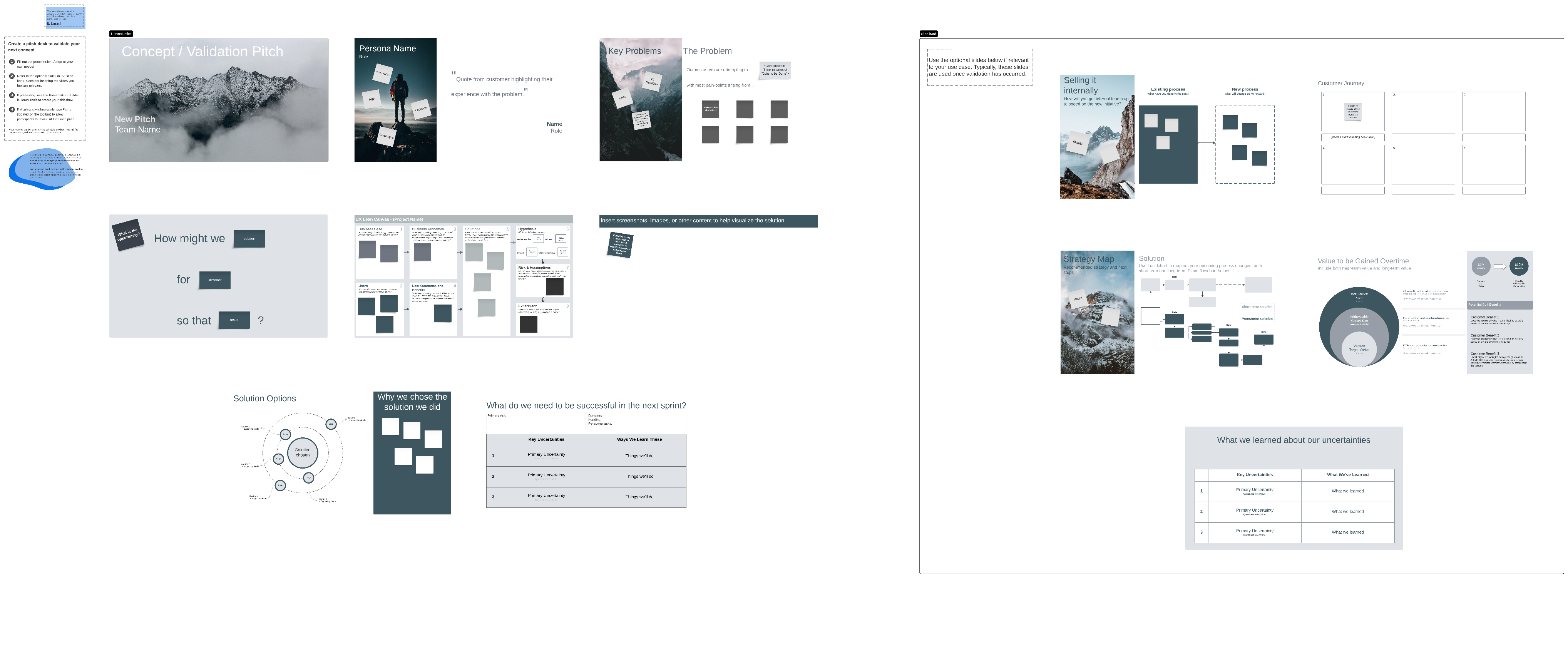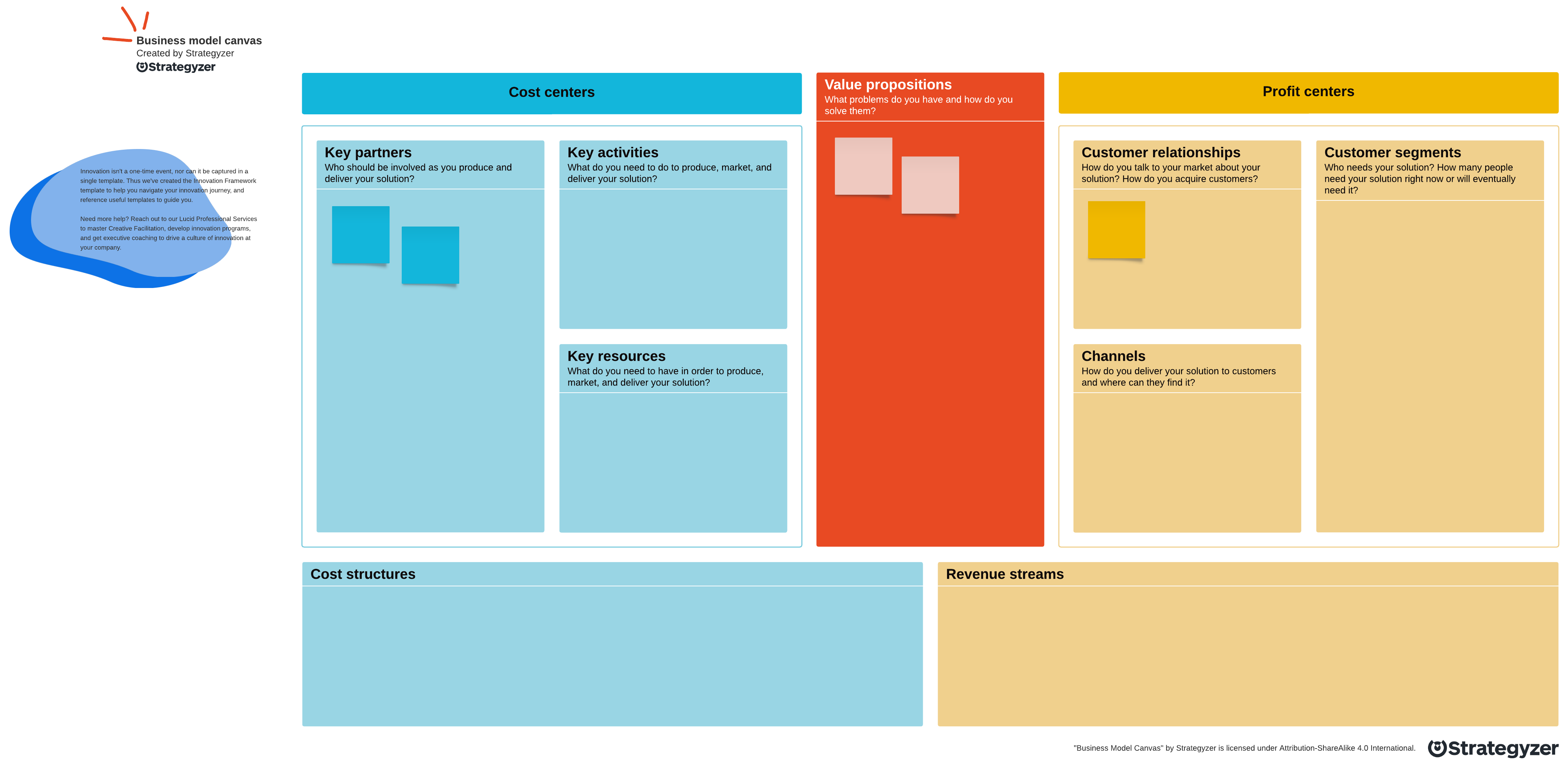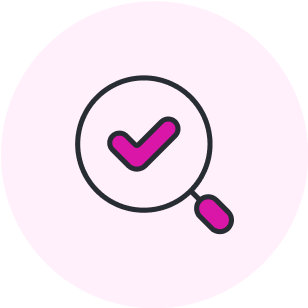
How to develop an efficient innovation process
Reading time: about 7 min
Topics:
Innovation. Innovation. Innovation. It’s a chant in every org-wide meeting in the world right now. Why? Without consistent progress, businesses risk losing their competitive edge. Tack on the current state of the economy and the pressing need to do more with less, and it’s clear that companies not only need to figure out how to innovate, but they need to do so efficiently.
Businesses standardize organizational processes to increase efficiency, and they can do the same thing for innovation. By doing so, they can create consistency, drive productivity, and empower employees with clear guidelines. Along with those benefits, developing an internal innovation process can generate and nurture creative ideas within companies, lending to their competitive advantage.
In this article, we’ll share expert tips for creating a dynamic innovation process that makes innovation consistent, repeatable, and scalable.
What is an innovation process and how does it differ from other organizational processes?
An innovation process should be a documented walkthrough of how teams can turn innovative ideas into actual products, services, or features. Keep in mind that there’s one surefire way to ensure your innovation process fails—and that’s passively waiting around for good ideas to strike. That’s like sitting in a field waiting for lightning to hit you. Your chances are slim!
But if innovation teams follow a rigid end-to-end innovation process, they may end up with products, services, or features that don't actually serve a need or meet customer demand. This means the team wasted tons of time (and money on a funded project)—talk about inefficient!
Instead, if you approach innovation from a non-linear perspective, it leaves room for experimenting and getting early feedback. In fact, a flexible innovation process is an essential element of innovation management. By providing clear milestones, even if they aren’t concrete, a process helps these teams secure funding and headcount from stakeholders while saving resources.
As an organization that strives to give our audience actionable strategies and insights as frequently as possible, we often share step-by-step guides to elevate workflows. But, in the case of innovation, the process may differ from organization to organization (and even from project to project).
So, instead, we want to share our philosophy that innovation processes should be malleable. Think of it like starting with a block of wet clay—you may have a process for how you’re going to turn it into a vase, but you also know that you may adjust certain steps or movements along the way.
3 phases of the innovation process
At Lucid, we examine the innovation process in phases. Within each phase, there are certain actions you might incorporate into your own innovation process.

Phase #1: Conception
During the initial phase, the goal is to identify problem-solution fit. This means validating that the innovative idea will actually solve a tangible problem that current customers face.
As we previously mentioned (and you already know), the state of today’s economy means that efficiency is as important to companies as innovation. The conception phase is crucial because the last thing you want to do is run with an idea that doesn’t solve a problem for your customers. That will be a waste of time and resources and hinder your innovation goals.
So, during the conception phase, avoid getting tunnel vision for the solution. Instead, start with a clear vision of the problem.
Here’s an example. Let’s say that you want to build a car. You pitch the idea and start running with it. In the end, you have a high-end sports car that’s incredibly fast. But your customer was just trying to get from point A to point B. Your product is out of their price range and doesn’t actually address their need.
Instead, you could’ve started not by saying you wanted to build a car, but by saying you wanted to help your customers get from one place to the next faster than walking. This is a much clearer goal. You might’ve delivered a bicycle first, and then a motorcycle, and then a car.
This iterative process comes from the Agile methodology. It illustrates the importance of nailing this initial stage and truly embracing Agile innovation.
The main activity within this phase will be creating a concept pitch. Once you’re clear on the problem you’re solving and the way you’ll deliver that solution to your customers, you’re ready to build a pitch and move to the second phase.

Phase #2: Validation
You've proven your concept's worth, but can it thrive in the competitive landscape?
During the first stage of the innovation process, you identified the problem-solution fit and proved that customers can recognize the concept's value. But now you have to determine the product-market fit.
What does identifying product-market fit entail? It means discovering that your concept solves your existing customer’s problem and has a growth market opportunity. This term means identifying whether there is enough demand for your project.
You can take a few actions within this phase to validate the growth market opportunity. Depending on your industry, the size of your business, the demographics of your audience, and other factors, you may take different approaches. To reiterate, this is not a rigid formula—it’s an adaptable guide.
In this phase, it's essential to:
- Identify key assumptions: Pinpoint whatever assumptions are crucial for your solution's success. These are the risky elements that your minimum viable product (MVP) and experiments will need to validate.
- Embrace experimentation: Dedicate your time to building experiments, testing hypotheses, and refining your product.
- Prioritize data collection: Shift your focus towards gathering real data rather than relying solely on subjective feedback. The objective is to collect tangible metrics that can help de-risk your investment.
Much like the first phase helps avoid wasting time and resources by focusing on the problem, not the solution, this phase avoids wasting time and resources because it allows for continual learning and adjustments to your innovation strategy based on real data, not assumptions.
Once you’ve clarified your growth opportunities, craft a validation pitch. Then, you’re ready to move to the third and final phase.

Improve your innovation skills
Designing experiments and pitching ideas are key skills for innovation. Learn more about how to develop your innovation skillset.
Read morePhase #3: Growth
By the time you reach the last stage, you’ve conquered several challenges in the innovation process. Now, it’s time to start conquering the market.
We’re zooming out a bit in this phase because your focus isn’t honed in on the solution itself. Instead, you’re going to concentrate on sustaining your solution in the marketplace.
The growth phase means taking a step back to get a full picture of the market. Your product may be groundbreaking, but without a clear plan for reaching customers, it won’t reach its potential.
Here are a few questions to be asking continuously in the growth phase:
- Who are our customers, and how can we best serve them?
- What strategies can we implement to reach and engage our target audience effectively?
- How can we differentiate ourselves from competitors in the market?
- What resources and support will be necessary to sustain long-term growth?
- How can we adapt and evolve our innovation to meet changing market dynamics?
- What metrics should we use to measure success and progress?
- Are there any potential challenges or risks we need to anticipate and address proactively?

It’s crucial to realize that just because you’ve reached the final phase of the innovation process, innovation doesn’t stop. Embrace a truly Agile mindset and continue to iterate. That might involve updated features for your product, streamlined customer service workflows, or better ways of documenting.
Turning your ideas to action with Lucid
Innovation is a critical focus for companies across industries, and having a solid process in place to turn ideas into reality is a game changer. Implementing an innovation process will give your organization a competitive advantage, empower your employees, and better serve your customers.
With Lucid, you can collaborate with team members on a shared virtual canvas. This workflow will naturally create an innovation repository, which helps teams stay aligned and reference past ideas and decisions. Plus, sharing Lucid documents with stakeholders is simple. They can see the progress of innovation projects in real time.
If that’s not enough, Lucid’s intelligent capabilities such as Collaborative AI and Visual Activities help teams with ideation and prioritization.
If you want to dive deeper into the details of Lucid’s innovation process, check out this innovation framework template. Or, click below to read our full guide that covers this concept in even more detail.

Your guide to turning ideas to action
Check out our blog post on Lucid’s innovation framework and access templates to help you along the way.
Read nowAbout Lucid
Lucid Software is the leader in visual collaboration and work acceleration, helping teams see and build the future by turning ideas into reality. Its products include the Lucid Visual Collaboration Suite (Lucidchart and Lucidspark) and airfocus. The Lucid Visual Collaboration Suite, combined with powerful accelerators for business agility, cloud, and process transformation, empowers organizations to streamline work, foster alignment, and drive business transformation at scale. airfocus, an AI-powered product management and roadmapping platform, extends these capabilities by helping teams prioritize work, define product strategy, and align execution with business goals. The most used work acceleration platform by the Fortune 500, Lucid's solutions are trusted by more than 100 million users across enterprises worldwide, including Google, GE, and NBC Universal. Lucid partners with leaders such as Google, Atlassian, and Microsoft, and has received numerous awards for its products, growth, and workplace culture.
Related articles
How to turn your document repository into an innovation repository
Not all document repositories will help you innovate. Find out how to create one that boosts alignment and creativity here.
Agile innovation: Applying Agile and Lean practices to boost innovation
Learn how to pull inspiration from Agile and Learn practices to make your innovation processes more efficient.
Why you need an innovation strategy ASAP (with tips to get started)
You can’t innovate consistently without a strategy. Uncover all the benefits and how to get started here.
How Lucid boosts innovation—from ideation and beyond
Discover how Lucid enhances your innovation process from ideation to reality.